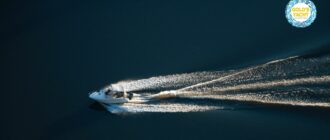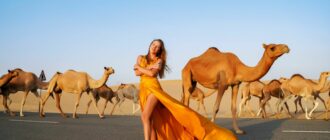Get these on your bucket list…
Abu Dhabi is a land of beautifully blended contrasts. Of worlds old and new, of deserts, island networks, and lush green oases set against hyper-modern towerscape, and future-tech enhanced infrastructure. Contained within its borders there are many marvels, but often less accessible, it’s the stunning natural ones can easily be overlooked.
This is a guide to some of our favourite Abu Dhabi natural wonders, and where to find them.
Al Mirayr forests
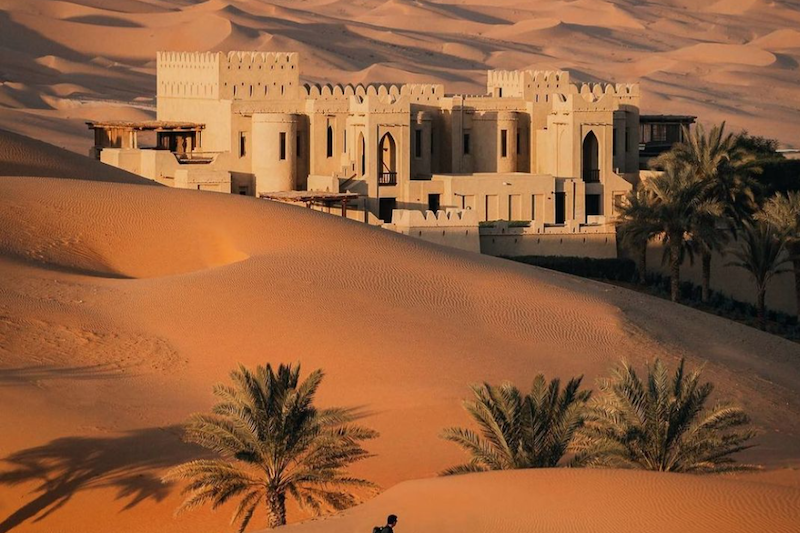
Pic Credit: @wonguy974 via IG
Just a stone skim away from the beautiful Qasr Al Sarab Desert Resort by Anantara (geolocation here), you’ll find the arresting sight of a desert forest, known as Al Mirayr. It’s unlikely to be the largest wooded expanse you’ll have clapped eyes on, but with its juxtaposition to the saffron-hued desert sands around it, it might just be one of the most impressive. You’ll need a 4WD enabled vehicle to get there, and if you fancy extending the wadi roaming, there are plenty more exciting sights to explore in the surrounding sand. For more off-the-beaten-track adventures, check out our guide to some of the best off-road trips in Abu Dhabi.
Al Ain Oasis
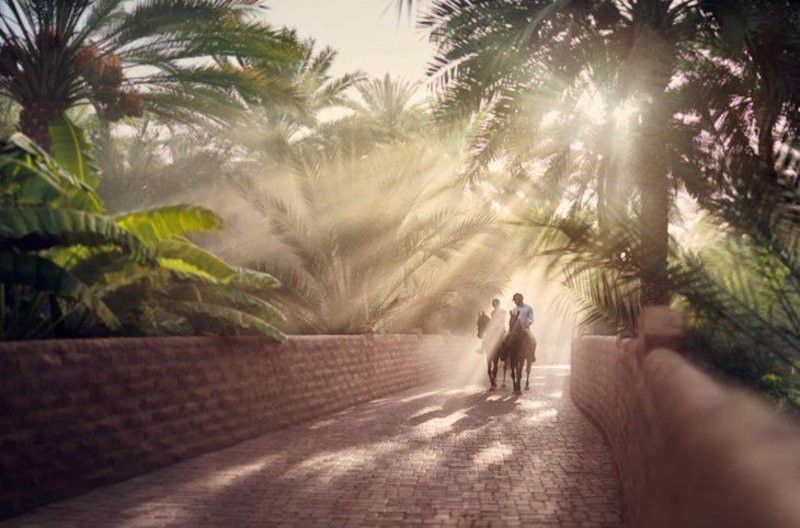
If you’re looking for green, Al Ain AKA ‘The Garden City’ is a pretty good place to start. This 1,200-hectare desert oasis is found in the middle of Al Ain and attained UNESCO World Heritage status in 2011. It contains more than 147,000 date palms, trees bearing mangos, oranges, bananas, figs, and jujube. With its whimsical shaded pathways beneath fractal canopies it’s a place that provides a shuddering contrast to the urban jungle of Abu Dhabi’s cityscape. There’s also an Eco-Centre that offers insight into the conservation efforts at the oasis, and a look back at its history.
Al Ain, open daily 9am to 5pm. Tel: (03) 711 8251, take a virtual tour at visitabudhabi.ae
Al Wathba Fossil Dunes
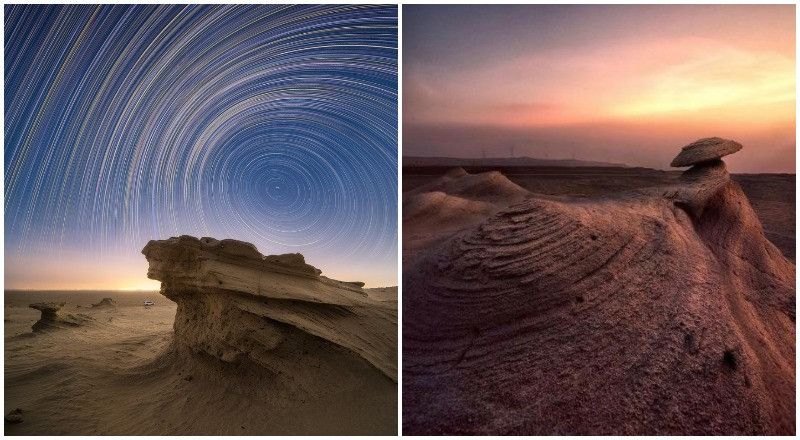
The desert areas of the UAE hold many wonders, but few can compare to the ethereal beauty of Al Wathba’s fossil dunes. These naturally occurring monoliths are jutting, jagged reminders of the emirate’s storied geological past, having been forged over the past 120,000 years. Found a short distance away from the (also well-worth a visit) Al Wathba Wildlife Reserve, an expanse covering more than 1,700 of the fossil dunes has now been designated as a protected landmark. The Al Wathba Fossil Dune Protected Area now features a visitor centre, a viewing area, an amphitheatre and 7kms of hike-able trails with educational signage explaining the origins and cultural significance of these magnificent sand relics.
Al Wathba Wetland Reserve
A popular resting spot for flamingos during autumn and spring, this note-worthy site can be found beside the beautiful Al Wathba fossil dunes. Known as Flamingo City, it is home to various wildlife habitats, including freshwater and saltwater lakes. The area hosts over 250 bird species, and 37 plant species, as well as a plethora of marine life. The wetland is a popular place for bird watching and even offers two self-guided walking routes to explore the area. To keep the area as natural as possible, there are no cafes so be sure to pack in your reusable water bottles as the walking routes are quite long.
ead.gov.ae, visitabudhabi.ae
Desert Lakes
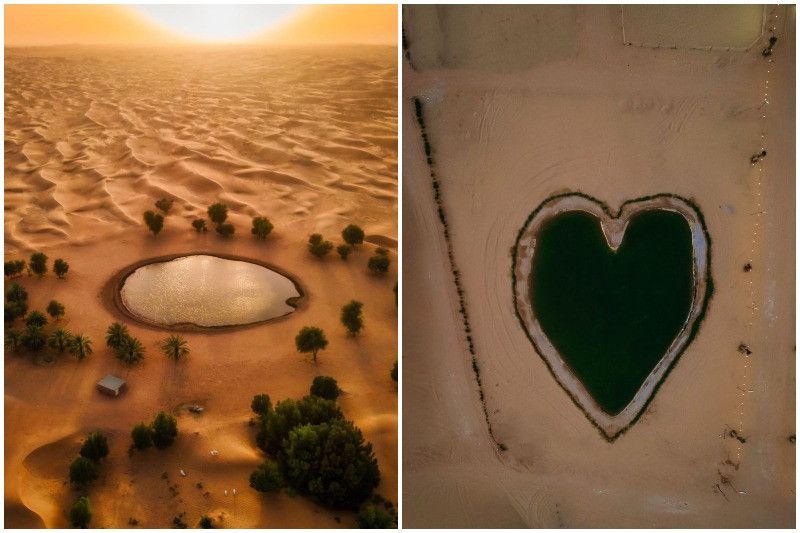
There’s a bit of a catch with this pair of entries… Their location is a trade secret (and, well, the second one probably isn’t ‘natural’ is it?). Both images were captured (well before the current drone ban) by the incredibly talented, intrepid photographer, @amarhabeeb. He’s responsible for the discovery of another lisiting a bit further down, but these finds starkly represent what can happen when you follow that pioneer nomad spirit and explore the desert for hidden wonders. Safely of course, it can be an inhospitable place without modern luxuries. If you’re heading out to the wilds, tell someone, go accompanied, go prepared, take more fuel, water and food than you need, and remember there is currently a ban in place for all non authorised drone flights.
Jebel Hafit
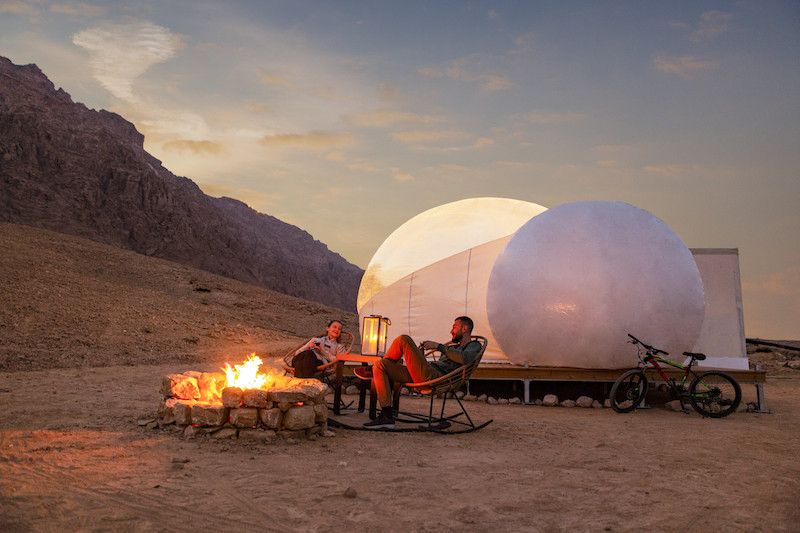
Part of a UNESCO World Heritage Site, Jebel Hafit is Abu Dhabi’s tallest peak, located in Al Ain, and about 90 minutes’ drive from the capital city. There is a campground that offers tented accommodation and pitches for those that wish to bring their own canvas and poles. You can also rent traditional Bedouin-inspired tents; bubble tents — equipped with panoramic windows that are just perfect for star-gazing; and luxury dome tents which come with AC, a TV and, excitingly a telescope. Prices start from Dhs650. Holiday-makers come here to hike, mountain bike (rental available), dune buggy, ride horses and camels and enjoy the rare fresh air (and lack of light pollution) that contributes to the perfect conditions for astronomy. Wonders above wonders below.
You can book your stay now here or by calling (03) 711 8362.
Jebel Hafit Beehive Tombs
Situated at the foothills of the UNESCO World Heritage Site, the ancient tombs mark the beginning of the Bronze Age in the Middle East. 5,000-year-old structures and evidence of ceramic vessels and copper artifacts were found here, indicating the importance of maritime trade across the Arabian Gulf even then. You can visit the park’s majestic natural surroundings on a mountain bike, horse, or camel. Discover archaeological and historical remains that tell stories of this unique area’s ancient habitation.
Mangrove Forests
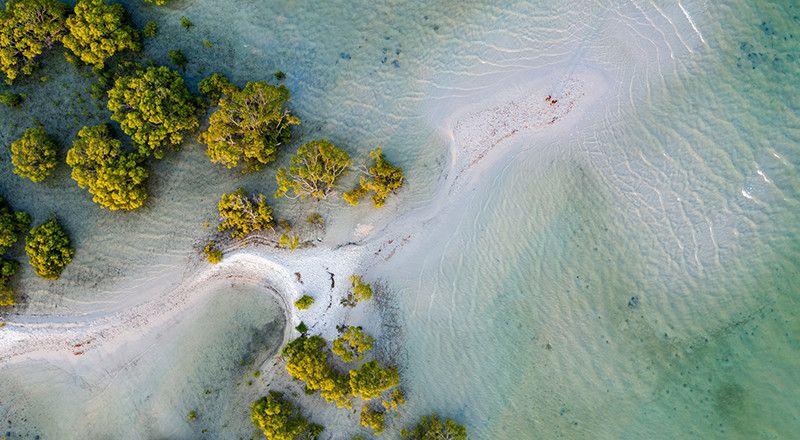
ubail Mangrove Park opened in January 2020, offering visitors the opportunity to explore one of this region’s most fascinating natural ecosystems. Found nestled on a quiet outcrop of Jubail Island — the mangroves became an instant hit with locals, residents and tourists. It features a meandering 2.3km boardwalk and sits about 20 minutes drive from Downtown Abu Dhabi. Park inhabitants include herons, flamingos, turtles, gazelle, crabs, as well as some more mysterious creatures. There’s plenty of ways to explore this fascinating turquoise expanse including ranger-led, guided boardwalk (from Dhs50), kayak (Dhs100), and e-canoe tours (from Dhs80) of the mangroves.
Jubail Mangrove Park, Al Jubail Island (next to Saadiyat Island), Abu Dhabi, 8am to 7.30pm daily, Dhs15 for adult, Dhs10. Tel: (05) 63032423. park.jubailisland.ae
Liwa Oasis and Tal More’eb
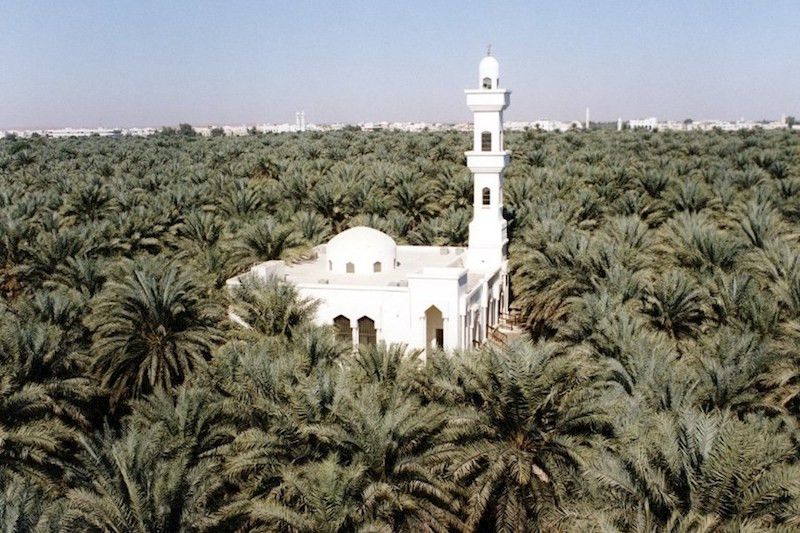
Found at the northern edge of Rub’ Al Khali (the Empty Quarter), Liwa Oasis is the ancestral home of the Nahyan family and the Bani Yas tribe. The Liwa Oasis area marks out a 100km stretch of desert, where the dark green of date trees cuts a stark contrast against the amber desert sands. It’s all possible thanks to an elevated water table, close to the surface. There are walled areas, reconstructed forts and watch towers and a collection of truly gigantic dunes, including Tal More’eb, at 300 metres high it’s one of the world’s largest.
Plant Lake
View this post on Instagram
Found at the eastern edge of Al Jubail Island, close to Zeera Island and across the water from Khor Laffan, this fluvial feature found amongst the mangroves was given the name ‘Plant Lake’ by the individual that discovered it — Abu Dhabi-based photographer, Amar Habeeb (Insta handle: @amarhabeeb). The stunning depth of green is no Photoshop trickery, it really is that lucid. When the beguiling natural feature popped up on the digital viewfinder of his drone remote, Habeeb recalls immediately thinking “Emerald Green. I couldn’t believe my eyes”. As mentioned above, the private use of drones is currently prohibited in Abu Dhabi, so you’re unlikely to be able to replicate this epic shot any time soon.
Saadiyat Reef
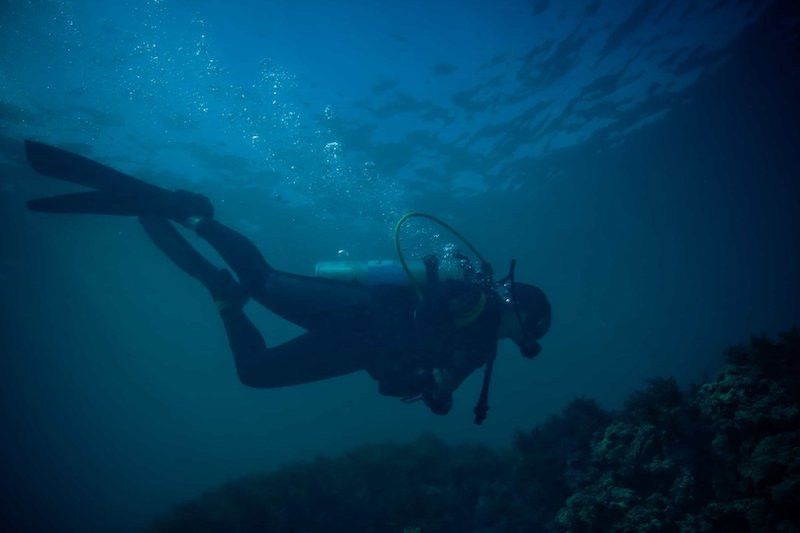
The emirate’s coral reefs are currently subject to a massive rehabilitation project, supervised by the Environment Agency — Abu Dhabi (EAD). Even with the effort in full swing, there are a number of dive sites across the Abu Dhabi archipelago that offer safe and legal access to coral reefs. You can find multiple dive companies offering chartered trips out to locations such as Philippe’s Reef and Saadiyat Reef (weather and numbers permitting), with prices from around Dhs300 for snorkelling and Dhs500-600 for scuba activities. Whilst the variety and vibrancy of the reef’s colour might not match those found in some other more famous dive spots in the world, the marine life you’ll find navigating them, is truly mask-misting. Turtles, for example, are not an uncommon sight.
Salt Lakes

Abu Dhabi’s Salt Lakes took Instagram by storm last year. Bloggers, influencers and the naturally curious headed out to their location near Al Wathba Wildlife Reserve, to capture snaps with the narrow pastel green lakes filled with crystalline lily pad features. You can find the exact location on Google Maps, but getting there isn’t easy. Take an SUV, take snacks and back up supplies, tell someone where you are going, do not litter, and make sure you’re all fuelled up. We promise it’s worth it.
Images: Instagram / @a.c.h.r.i.s.t.y / @perspectivesofjames / @vishnu.ae
Shuweihat Island
View this post on Instagram
This beautifully unique island is surrounded by red rocks and erosion-carved cliffs, with pristine beaches. Unfortunately due to littering and mistreatment, making landfall on the island is currently prohibited for the public. However if you do make the trip, you can enjoy the view from a distance.
Images: Instagram/Visit Abu Dhabi/What’s On Archive

